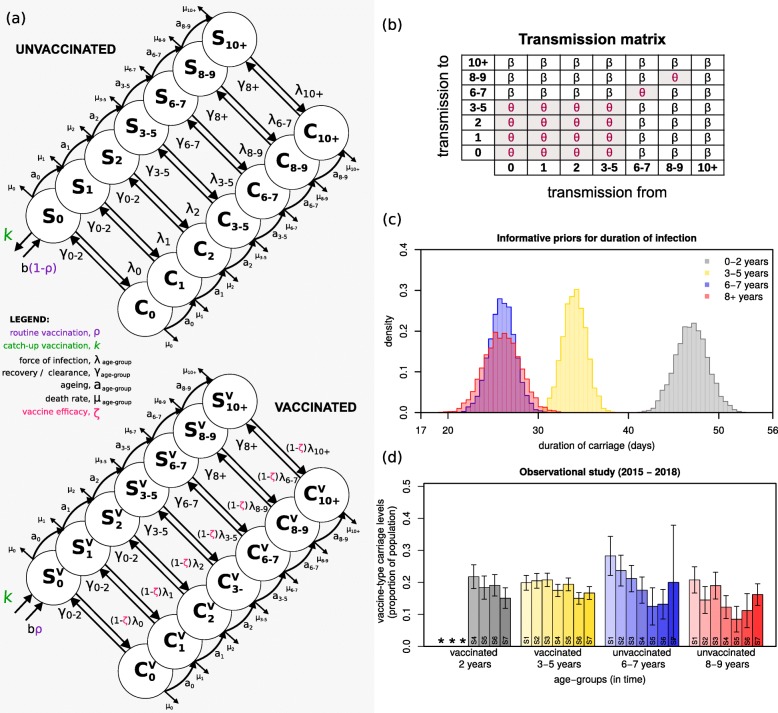Fig. 1.
Survey data and model framework, priors and transmission matrix. a Seven age groups were modelled: 0, 1, 2, 3–5, 6–7, 8–9, 10+ years of age (circles), each divided into unvaccinated (top) and vaccinated (bottom). Labels aage group mark ageing rates per age class; μage group mark age-specific death rates; b marks births, at which point a proportion (ρ) are vaccinated (purple); ζ marks vaccine-induced protection, expressed as reduction in susceptibility to infection of vaccinated individuals (magenta); λage group mark age-specific forces of infection; γage group mark age-specific rates of clearance from infection; k marks catch-up vaccination (green). b The transmission matrix used, with coefficients β and θ, where θ is the specific coefficient for transmission within and between particular age groups. β and θ are estimated when fitting the survey data. c The informative priors used in the fitting exercise for mean (standard deviation) infectious periods (days) of 47 (1.8) for 0–2 years old; 34 (1.3) for 3–5 years old; 26 (1.4) for 6–8 years old; 26 (2.0) for 8+ years old. The posterior values of these periods (1/γ0–2, 1/γ3–5, 1/γ6–8, 1/γ8+) are estimated when fitting the survey data. d Mean and standard error for carriage as reported in the observational study data (surveys) per age group (Additional file 1: Table S7). S1 to S7 highlight the surveys 1 to 7. The * mark data that was not collected

